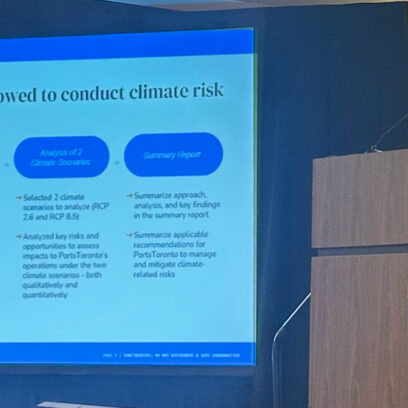Carbon Offsets vs. RECs: How They Impact Your Sustainability Strategy


🌍 Carbon markets can feel overwhelming—fragmented data, limited transparency, and conflicting advice make it hard to know where to start. In this webinar, our experts give a clear, practical introduction to the VCM.
Exploring the differences between carbon offsets and RECs, their respective roles in reducing GHG emissions, and their implications for a company’s sustainability strategy.
In today’s world, organizations are placing a greater emphasis on sustainability and reducing their greenhouse gas (GHG) emissions. Consequently, many companies are utilizing carbon offsets and Renewable Energy Certificates (RECs) as tools to achieve their sustainability goals. This blog post will delve into the fundamental distinctions between carbon offsets and RECs, highlighting the importance of understanding these differences for organizations striving to make informed decisions regarding their sustainability strategies. Furthermore, we will explore how these two mechanisms can be strategically integrated to create a comprehensive, effective emissions reduction plan for businesses of all sizes.
What Are Carbon Offsets?
Carbon offsets represent verified emissions reductions stemming from projects that reduce, remove, or avoid GHG emissions. These offsets allow organizations to counterbalance their emissions and work towards carbon neutrality. Quantified in metric tons of carbon dioxide equivalent (CO2e), offsets stem from diverse projects such as renewable energy, energy efficiency, reforestation, improved forest management (IFM), and methane capture. To maintain integrity, offsets must meet criteria like additionality and undergo third-party verification. Carbon offsets can play a role in the reduction of an organization’s GHG emissions across Scopes 1, 2, and 3 in their inventories and reporting, enabling organizations to claim carbon neutrality or reduced emissions while working to reach net-zero targets.

Ready to Talk About Your Sustainability Goals?
Get tailored sustainability solutions that meet your business’s unique needs. CarbonBetter delivers tomorrow’s climate solutions—today. Contact Pankaj Tanwar, Managing Director of Climate Services, to get started.
Not ready yet? Read our client stories to see what it’s like to work with us.
What Are Renewable Energy Credits (RECs)?
RECs are a type of Energy Attribute Credit (EAC) that represent the environmental attributes of renewable electricity generation. These certificates enable organizations to support the growth of renewable energy and claim renewable electricity usage. Each REC represents one megawatt-hour (MWh) of renewable electricity generated from solar, wind, geothermal, and biomass sources delivered to the electricity grid. RECs are certified and tracked by reliable systems such as PJM EIS’s Generation Attribute Tracking System (PJM-GATS), New York Generation Attributes Tracking System (NYGATS), the European Energy Certificate System (EECS), and the International REC Standard (I-REC), ensuring their validity and preventing double counting. They contribute to reducing an organization’s Scope 2 GHG emissions in corporate inventories and reporting. There are typically two approaches to Scope 2 carbon accounting: location-based and market-based methods, with RECs being accounted for in the market-based approach.
RECs serve as a vital accounting tool for all claims related to renewable electricity usage, irrespective of the purchasing method or consumption pattern. Organizations have the option to acquire RECs either bundled with the physical electricity they consume or as a separate, independent purchase that can be matched with their electricity consumption. In either case, by purchasing and retiring RECs, organizations can clearly claim the use of renewable electricity or a specific percentage of their energy consumption as renewable.
Comparing Carbon Offsets to RECs
Below is a chart illustrating the key differences between carbon offsets and RECs, highlighting their unique roles in shaping businesses’ sustainability strategies. The chart provides a comprehensive comparison of these two essential tools, offering insights into their applications, benefits, and potential impact on organizations’ overall sustainability efforts:
Carbon Offsets vs. RECs: Comparing Their Contributions to Your Sustainability Strategy
| Aspect | Carbon Offsets | RECs |
| Unit of Measure | Metric tons of CO2 or CO2e | Megawatt hours (MWh) |
| Source | Carbon emissions reduction projects | Renewable electricity generators |
| Purpose | Represent GHG emissions reductions | Convey use of renewable electricity |
| GHG Reporting | Reduce/offset Scopes 1, 2, or 3 | Lower market-based Scope 2 emissions |
| Consumer Claims | Reduced or avoided GHG emissions | Use of renewable electricity |
| Additionality Test | Required | Not required |
Skip the RFP—CarbonBetter can help
CarbonBetter Certified Offset Portfolios allow carbon buyers to participate in a variety of projects, geographies, and technologies in one simple transaction rather than navigating a lengthy and complex RFP process with multiple carbon market participants.
Learn More about CBCO 22-1Leveraging Carbon Offsets and RECs for Sustainability
Understanding the differences between carbon offsets and RECs is crucial for organizations aiming to make informed sustainability strategy decisions. While both tools help reduce GHG emissions, carbon offsets address direct and indirect emissions, whereas RECs focus on indirect emissions from purchased electricity. Carbon offsets are deducted from total emissions to calculate net emissions, while RECs contribute to market-based Scope 2 emissions calculations based on the renewable generation's emissions factor.
When making public claims, organizations should be mindful of guidelines such as the Federal Trade Commission's (FTC) Green Guides, which ensure that companies make accurate marketing claims about their eco-friendly products and services, thereby preventing misleading communications to consumers and investors.
Conclusion
Carbon offsets and RECs are invaluable resources for businesses striving to reduce their emissions footprint and support sustainability initiatives. Understanding the fundamental differences between these mechanisms allows organizations to make informed decisions regarding their use and ultimately achieve their sustainability goals. If you have questions about utilizing carbon offsets and RECs to help your organization reach its sustainability goals, please do not hesitate to contact us and get started today.
To effectively incorporate both carbon offsets and RECs, start by assessing your organization's current emissions and energy consumption. Then, set clear sustainability targets and goals. Use carbon offsets to address direct and indirect GHG emissions across Scopes 1, 2, and 3, while utilizing RECs to claim renewable electricity usage and reduce Scope 2 emissions. A balanced approach allows for a comprehensive sustainability strategy that considers various emissions sources and encourages renewable energy adoption.
When choosing carbon offset projects, prioritize those with robust third-party verification, high additionality, and measurable impact on GHG emissions reduction. For RECs, prioritize renewable energy sources that align with your organization's sustainability goals and have the most significant potential for reducing emissions in your specific sector or region. In both cases, ensure the projects or sources adhere to the relevant standards and guidelines.
To ensure transparency and credibility, work with reputable carbon offset providers and REC issuers that adhere to stringent third-party standards and verification processes. Regularly report your organization's progress towards sustainability goals, including information about purchased offsets and RECs, to stakeholders, investors, and the public.
Communicate the impact by quantifying the emissions reduction achieved through carbon offsets and RECs purchases and clearly explaining the role each tool plays in your organization's sustainability strategy. Incorporate storytelling to make your message engaging and relatable, using visuals, infographics, and easy-to-understand language in your sustainability reports, marketing materials, and on your website. Ensure that your claims are in line with guidelines like the Federal Trade Commission's Green Guides to avoid misleading communications.
While carbon offsets and RECs can play a significant role in reducing your organization's GHG emissions and supporting renewable energy, it's essential to prioritize internal emissions reduction efforts as well. Implement energy efficiency measures, switch to cleaner energy sources, and promote sustainable practices within your organization. Achieving net-zero emissions requires a comprehensive approach that combines internal initiatives with external tools like carbon offsets and RECs.

About the Author
Pankaj Tanwar is Managing Director of Climate Services at CarbonBetter. He has experience leading Fortune 100 companies through their sustainability journeys, including sustainability driven growth in the food industry. Pankaj holds an MBA from Northwestern University’s Kellogg School of Management and a BTech in Mechanical Engineering from the Indian Institute of Technology, Kanpur.


